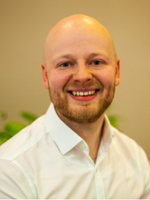Wealthy individuals, family offices and foundations are typically well versed in impact investing, but that is often not the case for larger asset owners, despite the growing momentum behind this asset class, according to a senior executive at a large private equity firm.
London-based Apax Partners found its usual institutional client base relatively cautious about impact investment when raising its first impact fund, which final closed at $900 million in December.
“The bigger appetite came from foundations and high-net-worth investors, a pool of capital that already understands what impact investing is,” said Ellen de Kreij, Apax’s lead adviser on sustainability and impact, during a panel at the British Venture Capital Association’s ESG Conference in London on June 18.

Ellen de Kreij
Apax Partners
“For a lot of investors, there’s still this tug between the concessionary impact, and mainstream, financial return-driven funds that are also generating impact,” de Kreij added.
“We found that learning curve to be much more steep than we had originally expected, in particular on the institutional side.”
Fundraising for the impact strategy required “a lot more educating [of clients] to explain the impact piece of what the firm does”, she said.
ASIA ALLOCATIONS
The fund received allocations from investors in Asia Pacific, which include some sophisticated clients and others coming up the learning curve, de Kreij told AsianInvestor.
As for investments, it’s possible the impact fund will find opportunities in Asia, she added, given it has offices in India and China and its flagship strategies have bought into businesses in both countries.
Apax’s 11th global buyout fund final-closed in March with $12 billion.
Investors in the strategy include pension funds, sovereign wealth funds, funds of funds, insurance companies, endowments and charitable foundations, said the firm.
An example of a seasoned impact investor is the Esmée Fairbairn Foundation, whose head of social and impact investment was speaking on the same panel as de Kreij. Jonny Page agreed that impact assets should have a strong investment return thesis as well as a positive impact.

Jonny Page
Esmée Fairbairn
Foundation
But while the charity conducts this sort of traditional impact investing, Page differentiates that from “impact-first investing”, which the organisation also does.
This involves “investing primarily for the impact we’re trying to generate and then thinking about how that affects the financial risk and return”.
In such cases, Esmée Fairbairn might accept a single-digit rather than double-digit return because it wants to ensure it is creating the right outcome, Page said.
CLEAR MOMENTUM
Despite the need for more education on impact investing, the capital flowing into such assets seems to be reaching a critical mass.
As an example, de Kreij cited Dutch pension giant ABP’s plan to allocate €30 billion ($32.5 billion) by 2030 to impact investments, which is also a rising focus for APG, the manager of most of ABP’s assets.
Impact funds are proliferating generally, de Kreij said. “More and more large institutional investors are finally getting over the precipice – after discussing this for a very long time – and saying we’re going to go for it”.
With early impact funds from the likes of Bain Capital, KKR and TPG now maturing, Bain is targeting $1 billion for its third impact strategy and KKR closed its second global impact fund in November with $2.8 billion.
In addition, Apis Partners, a growth-stage private equity manager focused on financial services with $2 billion of impact assets, is now raising its third fund with a target of $1 billion, said Ravi Bhatt, head of responsible investment at the UK firm.
Speaking on the same panel, Bhatt said asset managers looking to raise impact funds should be thinking more about how they will measure the impact of the investments those funds will make.
Such questions are hard to answer but are increasingly being asked by investors, he added.
¬ Haymarket Media Limited. All rights reserved.




